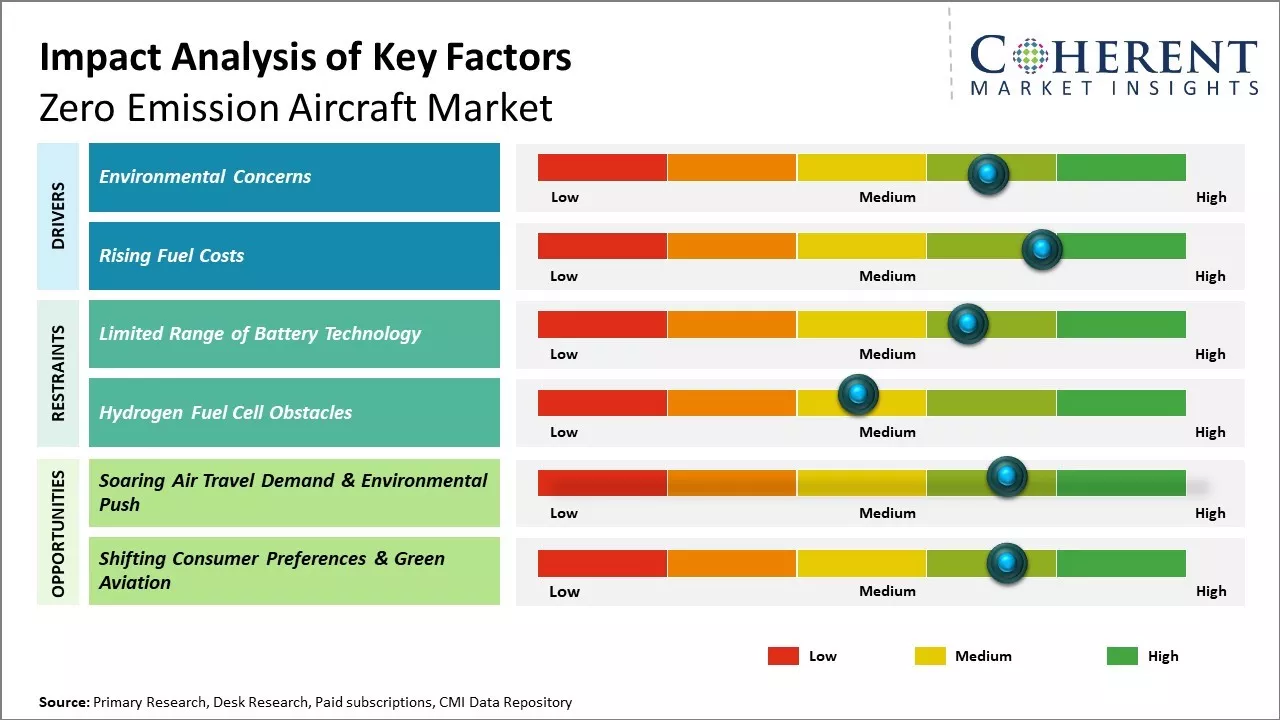The zero emission aircraft market is estimated to be valued at USD 8.95 billion in 2025 and is expected to reach USD 26.08 billion by 2032, growing at a compound annual growth rate (CAGR) of 16.5% from 2025 to 2032.
The zero emission aircraft market is expected to witness significant growth over the forecast period. The increasing concerns regarding carbon emissions from air travel along with stringent environmental regulations are expected to drive the demand for zero emission aircraft.

To learn more about this report, Request sample copy
Major aircraft manufacturers like Airbus and Boeing are investing heavily in the development of electric and hydrogen-powered aircraft. The development of advanced battery technologies suitable for aviation and increasing range of electric aircraft are further expected to promote adoption of zero emission aircraft. Rising fossil fuel costs and need to reduce dependency are also favoring the market growth. However, factors such as lack of required infrastructure and high development costs of these aircraft, may hinder the market growth in the coming years.
Environmental Concerns
There is growing concern among governments and the public about the environmental impact of aircraft emissions. The aviation industry is under increasing pressure to reduce its carbon footprint and find ways to cut emissions that contribute to global warming. Commercial aviation accounts for roughly 2-3% of total carbon emissions globally. With air travel continuing to grow in the coming years due to rising incomes and globalization, aviation emissions are expected to increase substantially if no action is taken. Zero emission aircraft have the potential to address this issue by eliminating local air pollutants and CO2 emissions completely. This would help the aviation industry transition to more sustainable operations and comply with tightening environmental regulations. More countries and municipalities are expected to introduce legislation that incentivizes the deployment of zero emission aircraft, especially for short-haul flights. This is likely to become a major driver of demand over the long run as consumers and corporations become increasingly environmentally conscious.
As the second-largest carbon dioxide emitter globally, after China, the United States faces significant air pollution challenges. In 2021, the country emitted approximately 67 million tons of pollutants, primarily from transportation and electric power sectors. According to the US Energy Information Administration (EIA), emissions from coal in the power sector increased for the first time since 2014. A recent study by the American Lung Association revealed that 4 out of 10 people, roughly 135 million individuals, live in areas with unhealthy air quality. Fossil fuel combustion is the primary cause, while climate change-induced events like wildfires and longer pollen seasons worsen air quality.
Joining thousands of companies around the world committed to making the Excellent Business Solutions.
View All Our Clients